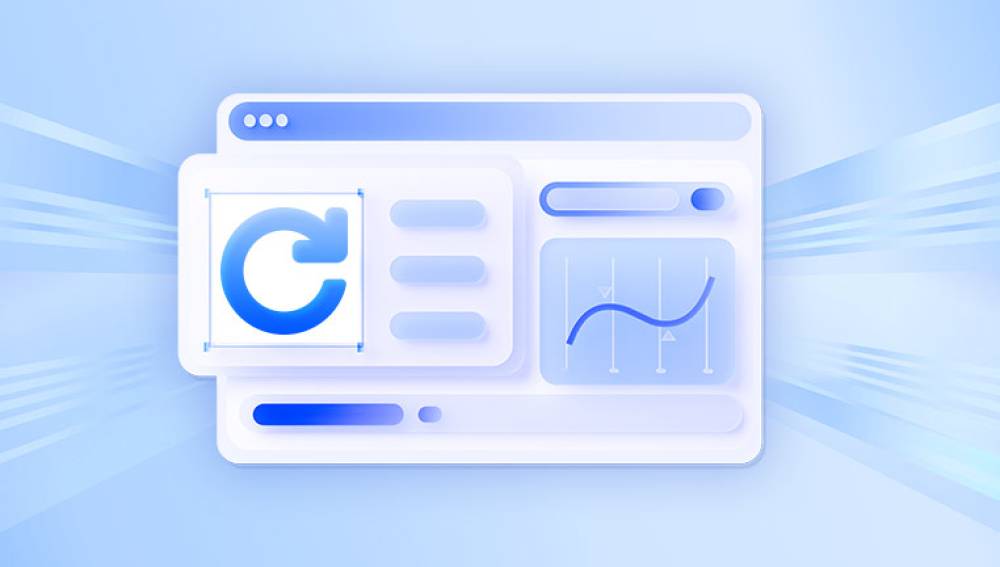I. PDF file damaged
PDF (Portable Document Format) is one of the most widely used file formats for document sharing and storage. However, PDF files can sometimes become damaged or corrupted due to various reasons such as improper file closing, software glitches, hardware failures, or virus attacks. When a PDF file is damaged, it may lead to issues like inability to open, missing pages, garbled text, or incorrect formatting.
II. Causes of PDF File Damage
Software - related Issues
Improper Application Shutdown: If the PDF - viewing or editing software is closed abruptly without properly saving the file, it can result in file corruption. For example, if you close Adobe Acrobat Reader while a PDF file is still being loaded or saved, the file may get damaged.

Software Bugs and Glitches: Bugs in the PDF - handling software can cause errors in reading, writing, or processing PDF files. These bugs may lead to incorrect data storage or modification of the file structure, rendering the file damaged.
Hardware - related Issues
Hard Drive Failures: Physical damage to the hard drive where the PDF file is stored can cause data loss or corruption. Bad sectors on the hard drive can prevent the proper reading or writing of PDF files. For instance, if the hard drive experiences a mechanical failure, it may result in unreadable or damaged PDF files.
Power Outages: Sudden power outages while the PDF file is being accessed or modified can disrupt the file - saving process and lead to corruption. The computer's memory buffer may not have had enough time to write the complete file to the hard drive, causing the file to be incomplete or damaged.
Other Factors
Virus and Malware Attacks: Viruses and malware can infect PDF files and modify their content or structure. They may delete or corrupt parts of the file, making it unreadable. Some malicious software may specifically target PDF files to spread or cause damage.
Incorrect File Transfer: When transferring PDF files between different storage devices or over a network, if the transfer is interrupted or fails halfway, the file may become damaged. This can happen, for example, during a USB drive ejection before the transfer is complete or due to network issues during an online file transfer.
III. Methods to Recover Damaged PDF Files
Using Adobe Acrobat's Built - in Repair Function
How to Use: Adobe Acrobat is a popular PDF - editing and - viewing software that offers a built - in repair function. To use it, open Adobe Acrobat, go to the "File" menu, and select "Open." Navigate to the damaged PDF file and click the drop - down arrow next to the "Open" button. Select "Open as a Repair." Adobe Acrobat will then attempt to repair the file and open it in a new window.
Principle: Adobe Acrobat's repair function works by analyzing the PDF file's structure and attempting to correct any errors or inconsistencies it finds. It may rebuild the file's internal table of contents, repair damaged fonts, or fix issues with image or text rendering.
Limitations: This method may not work for all types of PDF file damage. It is most effective for minor issues such as corrupt metadata or small - scale formatting problems. For severely damaged files, especially those with extensive structural damage, it may not be able to fully restore the file.
Using Third - Party PDF Repair Tools
PDF files can become corrupted due to unexpected system crashes, incomplete downloads, malware attacks, or bad sectors on a storage device. Drecov Data Recovery offers an effective way to repair and recover damaged PDF files. Follow these steps:
Step 1: Download and Install Drecov Data Recovery
Ensure you have the latest version of Drecov Data Recovery installed on your computer. This guarantees access to the most advanced recovery tools.
Step 2: Open the Software and Select PDF Recovery
Launch Drecov Data Recovery and choose the "Document Recovery" option from the main menu.
Step 3: Add the Corrupted PDF File
Click "Add File", locate the damaged PDF on your computer, and select it for scanning.
Step 4: Start the Repair Process
Press the "Scan" button to let Drecov Data Recovery analyze the file for errors. The software will attempt to reconstruct the document by fixing any detected corruption.
Step 5: Preview and Save the Repaired PDF
Once the repair process is complete, preview the file to confirm successful recovery. Click "Save" and choose a secure location to store the fixed PDF.
Recovering from a Backup
Using System Restore Points: If you are using a Windows operating system, System Restore can be used to restore the damaged PDF file to a previous working version. To do this, go to the "Control Panel," select "System and Security," then "System." Click on "System Protection" in the left sidebar. Select the drive where the PDF file is located and click "Restore." Follow the on - screen instructions to choose a restore point from before the file was damaged and restore the file.
Using Cloud Storage Backups: If you have been backing up your files to cloud storage such as Google Drive, Dropbox, or Microsoft OneDrive, you can usually recover the damaged PDF file from the backup. Log in to your cloud storage account, locate the PDF file, and look for options to restore it to a previous version or download an older copy.
Using External Hard Drive Backups: If you regularly back up your files to an external hard drive, you can simply copy the undamaged version of the PDF file from the backup drive to your computer. Connect the external hard drive, navigate to the folder where the PDF file was backed up, and copy the file to its original location on your computer.
Principle: The principle of recovering from a backup is straightforward. Since the backup contains a copy of the file as it was at a previous point in time, before it became damaged, restoring from the backup allows you to obtain a working version of the file.
Limitations: The effectiveness of this method depends on how recent and complete your backups are. If you haven't backed up the file recently, you may lose any changes made to the file since the last backup. Also, if the backup itself is corrupted or incomplete, it may not be possible to recover the file successfully.
Converting the PDF to Another Format and Back
Converting to Word and Back: You can use software like Adobe Acrobat or online conversion tools to convert the damaged PDF file to a Microsoft Word document. Open the PDF in Adobe Acrobat, go to the "Export PDF" tool, and select "Microsoft Word" as the output format. After the conversion, save the Word document. Then, open the Word document and save it as a PDF again. This process can sometimes resolve minor formatting and corruption issues as the file is reformatted during the conversion.
Using Online Conversion Tools: There are several online PDF conversion tools available, such as SmallPDF and Convertio. Upload the damaged PDF file to the online tool, convert it to a different format like HTML or TXT, and then convert it back to PDF. These online tools can be convenient as they don't require you to install any software on your computer.
Principle: When converting the PDF to another format and back, the software or online tool re - interprets the file's content and structure. This process can sometimes correct minor errors or inconsistencies in the PDF file's formatting and structure. For example, if there are issues with the way text or images are encoded in the PDF, the conversion process may re - encode them in a more standard way, fixing the problem.
Limitations: This method may not work for severe file corruption. Also, during the conversion process, there may be some loss of formatting or fidelity, especially if the PDF contains complex layouts, special fonts, or advanced features. The converted file may not look exactly the same as the original, and some data may be lost or altered.
IV. Preventing PDF File Damage
Regularly Save and Backup Your Files
Save your PDF files regularly while working on them, especially if you are editing or modifying them. This ensures that if there is a sudden software crash or power outage, you won't lose much work. Additionally, set up a regular backup schedule to back up your PDF files to an external hard drive, cloud storage, or another reliable storage medium. This way, if a file becomes damaged, you can easily restore it from the backup.
Use Reliable Software and Keep It Updated
Stick to well - known and reliable PDF - viewing and - editing software such as Adobe Acrobat Reader or Foxit Reader. These software programs are regularly updated to fix bugs and improve stability, reducing the risk of software - related file corruption. Keep your PDF software updated to the latest version to ensure that you have the most stable and secure version.
Scan for Viruses and Malware Regularly
Use a reliable antivirus and anti - malware software to scan your computer regularly. This helps to detect and remove any viruses or malware that could potentially infect and damage your PDF files. Set up automatic scans to ensure that your computer is constantly protected.
Handle Files Properly During Transfer and Storage
When transferring PDF files, make sure the transfer is complete and successful before disconnecting the storage device or closing the transfer application. If you are using a USB drive, safely eject it from the computer to avoid file corruption. Also, store your PDF files on a reliable storage device with sufficient free space to prevent issues related to disk full or bad sectors.




